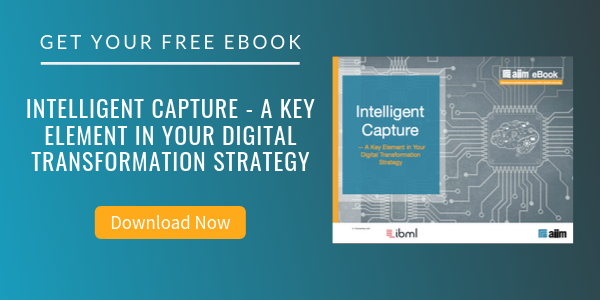
8 Things to Consider in Pushing Capture to the Point of Content Origin
It’s no secret that the IT landscape continues to experience major shifts resulting from new and transformative technological advances in the mobile and cloud computing markets. The combination of mobile and cloud enables organizations to implement solutions based on their preferred and practical deployment model. Meaning, it’s no longer our way, it’s your way!
The mobile + cloud value proposition undoubtedly has already had a profound impact on Enterprise Content Management (ECM) as it represents an opportunity for real-time capture, real-time delivery and real-time access to content. In the area of capture, the critical on-ramp to ECM, mobile/cloud allows organizations to further capitalize on the trend of capturing content at the point of origin resulting in significant cost savings, faster access to actionable data, reducing latency, and enhancing customer service. Capturing content at the point of mobile origin further extends these benefits as organizations are able to capture a broader range of critical content earlier in the business process.
A successful journey to remote capture requires careful planning and alignment with your organization’s business goals and objectives. Below are eight critical steps to consider as you embark on this important journey.
1. Assess the Business Need
There are a wide variety of applications that benefit from remote capture or capture at the point of origin including, but not limited to, accounts payable, contracts, lending documents, order processing, on-boarding, and expenses. Identify a single critical business process that originates in the virtual world. That virtual world can be remote offices, branch offices as well as virtual offices. Do a thorough assessment and identify the strategic imperatives required to support your business objectives such as cost savings, increased efficiencies, add value, reduce risks and improve customer service, to name a few.
2. Seek Expert Advice
You do not need to do this alone. Seek the assistance of knowledgeable system integrators who can assist in assessing, designing, implementing, training and supporting your remote capture initiative. The information technology professional you select should have vast experience in content management integration and should be able to assist you with all your ECM project initiatives.
3. Infrastructure Evaluation
Capture from the point of content origin needs to fuel other line of business applications such as Human Resource, Accounting, Customer Relationship Management and Enterprise Resource Planning. In conjunction with your selected IT professional, identify the vendors who have the tools that can support the integration with your backend applications. Clearly identify both the functional requirements such as recognition, workflow and image enhancement as well as the non-functional requirements such as ease of use and technical support that you will require.
4. Capture Device Assessment
Just as critical as the infrastructure are the devices that will be used to capture the content. Capture at the point of origin can be done using MFPs, smart phones, tablets or document scanners. Identify what devices are currently available and can be leveraged or what devices can be deployed to meet the need. There is no one device that fits all needs, so select the device or devices that will meet both your performance and quality standards. Keep in mind, with this deployment model the knowledge worker is facilitating capture and ease of use is critical. Equally important is the need to have ongoing support for future capture devices as they become available.
5. Careful Vendor Analysis
Again, working with your selected IT professional, carefully analyze a number of potential options for your remote capture project. The options should be compared across a number of different criteria such as their fit with strategic objectives, cost-benefit result, non-financial benefits, scalability, ongoing support for future technologies, ease of use, and implementation risks. Require a demonstration of your content being handled by the considered hardware and software solutions and then select the solution that best meets your requirements.
6. Phased Approach
A phased approach is often recommended when implementing ECM initiatives. This will enable your organization to find quick wins, which will help prove the concept and are essential to justify the continued investment and support for this project, as well as any future projects.
7. Benefit Realization
At the end of each phase of deployment, it is important to thoroughly measure the benefits realized to prove that all expectations from the project have been met. Measure both return on the investment and value on the investment. ROI is a tangible benefit that can be translated into quantifiable financial savings. Some examples would be reducing staff and reducing reliance on courier services. Value add on the investment would be enhancing customer service and faster access to content to support better decision making.
8. Leverage the Investment
Finally, organizations should always look for ways to leverage their IT investments. For most organizations when deploying ECM, there will be a beginning, middle, but no end. Organizations should constantly be evaluating the next content-centric project to embrace and identify the expected benefits from that project. This will enable ECM to evolve throughout the enterprise. Think big. Start small. Grow steadily.



